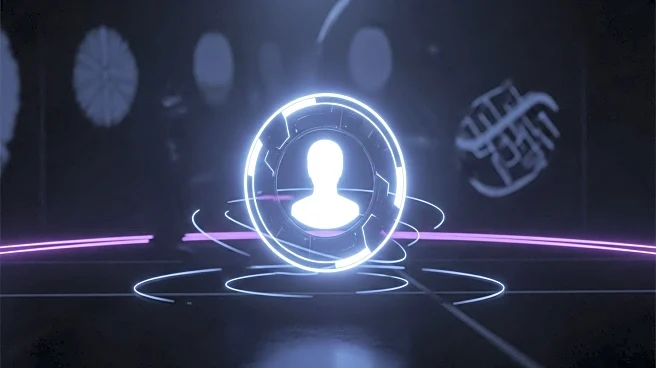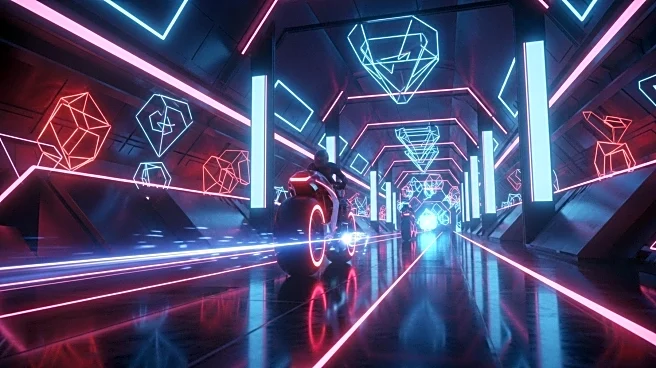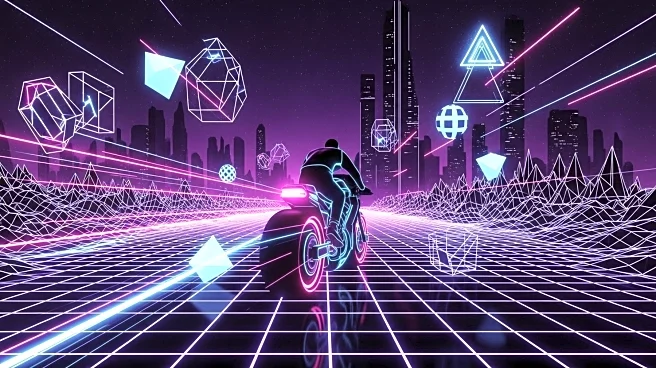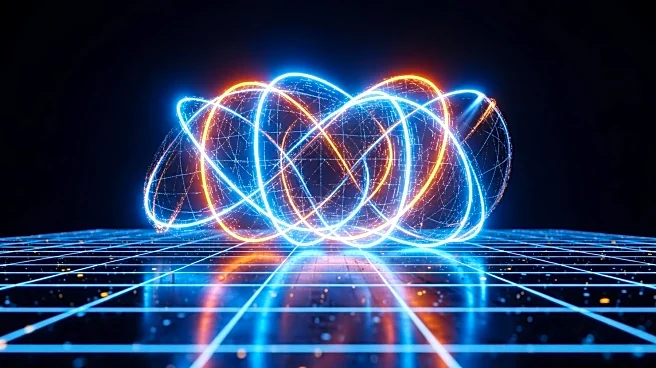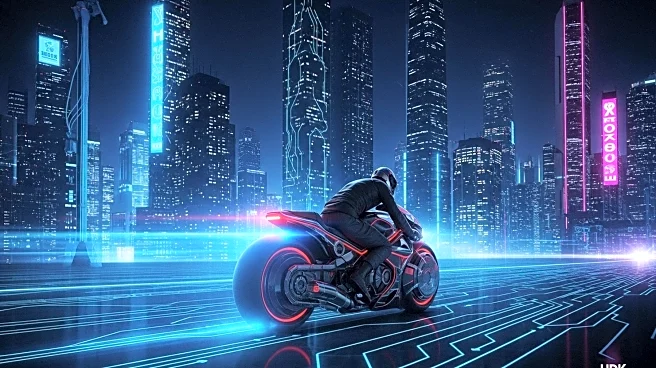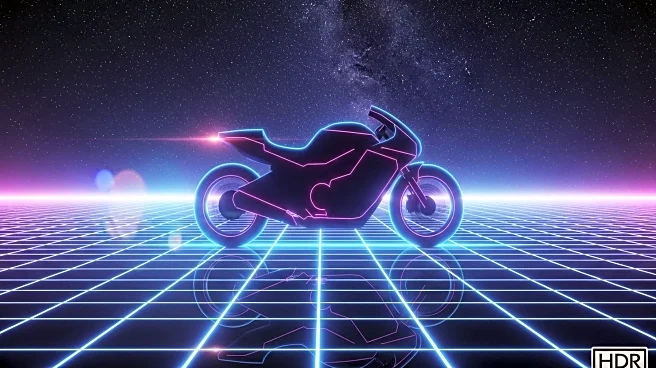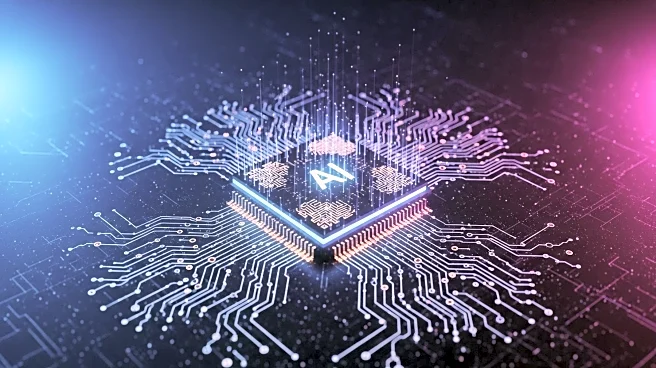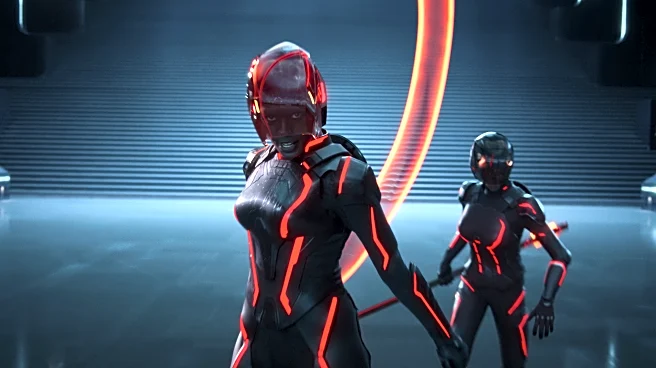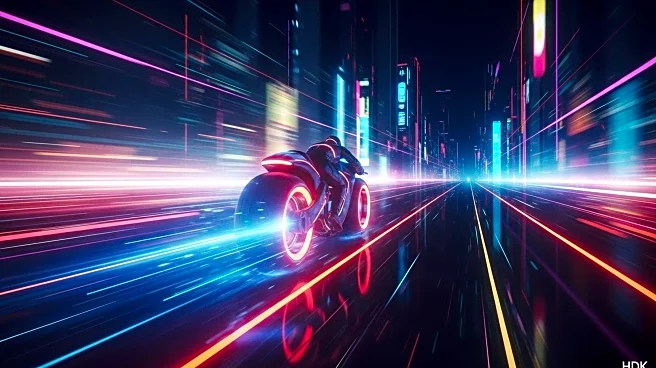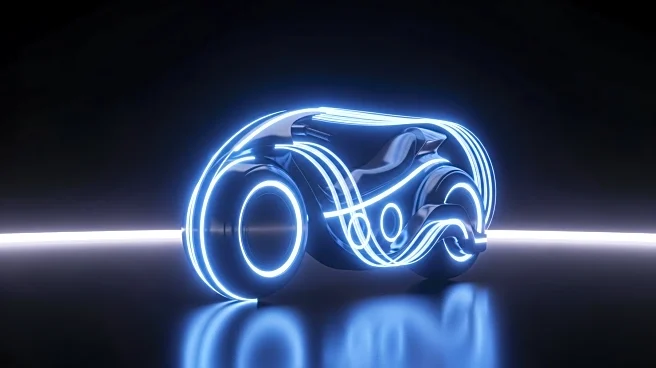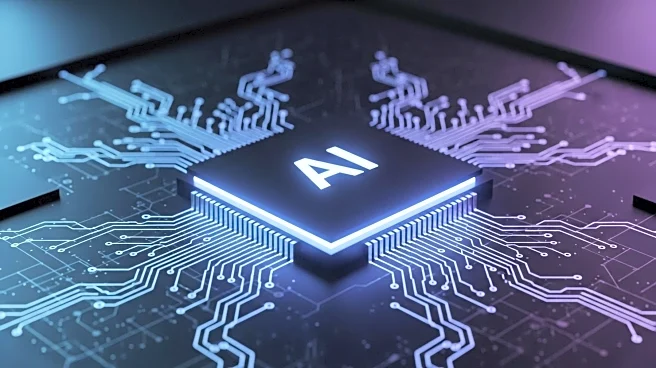What is the story about?
What's Happening?
TRON: Ares, currently in theaters, has introduced a mid-credits scene that suggests the possibility of a TRON 4 sequel. The scene reveals Evan Peters' character, Julian Dillinger, escaping to a self-created Grid after his digital empire is destroyed. A mysterious disk appears, transforming him into Sark, the iconic antagonist from the original 1982 TRON film. This transformation positions Julian as a hybrid villain, potentially more powerful than before. The film, directed by Joachim Rønning, stars Jared Leto, Greta Lee, and others, and features a soundtrack by Nine Inch Nails. The movie explores the interaction between humans and AI beings, marking a significant narrative development in the TRON franchise.
Why It's Important?
The mid-credits scene in TRON: Ares is significant as it sets the stage for a potential continuation of the TRON franchise, which has been a staple in sci-fi cinema since the early 1980s. The return of Sark, a beloved villain, could attract long-time fans and generate interest in future installments. This development also highlights the ongoing exploration of AI themes in popular media, reflecting societal concerns about technology's role in human life. The film's success could influence future sci-fi narratives and the portrayal of AI in cinema.
What's Next?
If TRON: Ares performs well at the box office, it could lead to the production of TRON 4, continuing the storyline established in the mid-credits scene. The potential sequel would likely explore the dynamics between Julian Dillinger and the resurrected Sark, offering new challenges for the protagonists. The film's reception will be crucial in determining the franchise's future, with stakeholders closely monitoring audience reactions and box office results.
Beyond the Headlines
The return of Sark in TRON: Ares could symbolize the enduring appeal of classic villains in modern cinema, reflecting a cultural nostalgia for iconic characters. This development may also prompt discussions about the ethical implications of AI, as the film portrays AI beings interacting with humans. The narrative could influence public perception of AI, encouraging dialogue about its potential benefits and risks.
AI Generated Content
Do you find this article useful?
